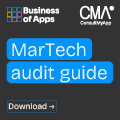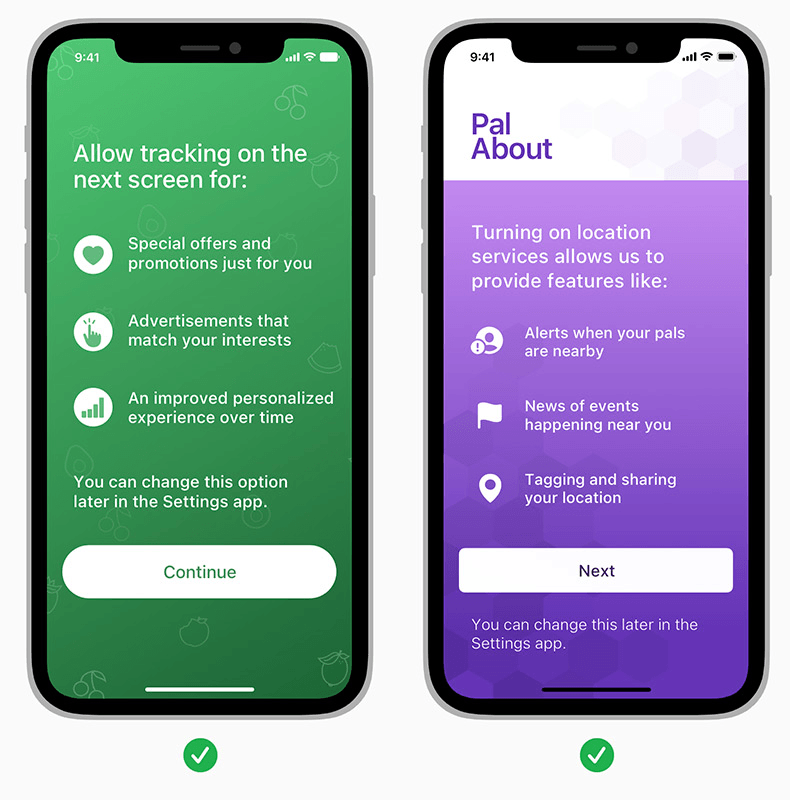
Apple’s iOS 14.5 update brings with it a highly anticipated change to user data acquisition with the AppTrackingTransparency framework.
AppTrackingTransparency (ATT) will restrict access to a user’s Identifier for Advertisers (IDFA) and require explicit consent from the user to collect personal information for tracking and advertising purposes.
Apple has set clear guidelines for developers on how to implement ATT, what is permitted and what is forbidden when asking the user for permission to collect their data. Apple has been strict concerning compliance for apps submitted to the App Store since ATT’s implementation on the 26th of April of this year.
These new changes have been steeped in uncertainty for months, which for many developers continues even after it has gone live. Read on to learn important factors to consider regarding this update and how it may impact your mobile app marketing strategy.
Changes in Attribution
Apple initially announced AppTrackingTransparency at their Worldwide Developers Conference in 2020. The promise of changes to data acquisition left marketers and developers unsure of how to navigate the advancing tide of policies and regulations. At first, significant critics of the move accused Apple of unfair market domination in the advertising realm, warning that developers will be forced to work with Apple for advertising solutions; Apple maintains that they are primarily concerned with user privacy.
Apple has provided a proprietary advertising solution in SKAdNetwork (SKAD) which will enable access to performance data at the campaign level via last-click attribution. With SKAD, whenever a user clicks on an ad that leads to a download, Apple sends a postback to the ad network verifying conversion. This process does not rely on the collection of any user’s personal data.
SKAdNetwork attribution has proven to be sufficiently accurate in tests, with this last-click attribution method found to only have an approximate 2 percent variance from currently used deterministic attribution methods. While SKAD is fairly effective on its own, it would be wise for developers and advertisers to diversify their portfolio of tools. By combining SKAD with probabilistic attribution and conversion modeling, or the extrapolation of what data deterministic attribution can secure to predict the behavior of users who reject data collection permission, more precise information can be gleaned to improve measurements.
But even a 2% variance can mean a big difference to marketers. The implementation of AppTrackingTransparency does not mean developers no longer have access to user data for advertising purposes; it simply means users must be made aware of what is happening and choose to opt-in. Developers striving for higher accuracy and more detailed metrics can focus on maximizing the user opt-in rate through clear and honest requests for data collection, so long as their request and information is in keeping with Apple’s guidelines.
Apple’s Developer Guidelines
The recent changes brought about by the ATT framework implementation may be daunting for developers and advertisers. Any advertiser would want to have as much data as possible to make the best decisions- but surreptitiously circumventing Apple’s new policies by exploiting loopholes is not the solution.
Since the iOS 14.5 update on April 26th, Apple has cracked down on developers attempting to obtain user consent through misleading or otherwise questionable tactics.
Time for a MarTech health check
Is your MarTech stack fueling growth or wasting budget? Spot the issues and fix them fast with this free guide from the experts at ConsultMyApp.
Download nowDevelopers have the opportunity to display a custom message preceding the tracking request system alert, and they are advised to use this messaging space to provide a clear and honest reason why they would like to access the user’s information. Apple has updated their “Human Interface Guidelines” section concerning data, titled “Accessing User Data,” with a clear list of what is acceptable when asking a user for permission to collect their data. From Apple’s website:
“Make it clear that opening the system alert is the only action people can take in your custom-messaging screen. […] If you display a custom screen that precedes a privacy-related permission request, it must offer only one action, which must display the system alert. Use a word like “Continue” to title the action; don’t use “Allow” or other terms that might make people think they’re granting their permission or performing other actions within your custom screen.”
-Apple’s Human Interface Guidelines, Accessing User Data, Displaying Custom Messaging Before the Alert
Apple also provides examples of message types that will, and have, led to apps being rejected from The App Store. In short, Apple states that developers may not “offer incentives for granting the request,” “display a custom message that mirrors the functionality of the system alert,” “show a [modified] image of the standard alert,” or “draw people’s attention to the system alert’s Allow button.”
Above: acceptable uses of a pre-alert message for ATT. Source: Apple.
Above: unacceptable uses of a pre-alert message for ATT. Source: Apple.
AppTrackingTransparency and Kids Apps
AppTrackingTransparency may present obstacles for the mobile advertising market as a whole, but it could offer new opportunities regarding apps designed for children.
When it comes to minors, data acquisition has restrictions already in place that make it more difficult to provide relevant advertising on child-directed apps, websites, and services. The Children’s Online Privacy Protection Act (COPPA) enacted in The United States in 1998 and made law in 2001 gives parents or guardians control over the collection of data from children under the age of 13.
Until now, mixed audience solutions have been used for advertising on children’s apps, which makes attribution quite difficult, and directly targeted advertising virtually impossible.
SKAdNetwork’s ability to provide accurate conversion metrics without needing to collect sensitive information may expand the availability of relevant advertising to developers of kids’ apps who have avoided using attribution in order to remain compliant with laws governing children’s privacy. While ATT’s full impact on contextual advertising, a compliant method that targets demographics instead of individual users, is yet to be seen, it is speculated that this will overall be a positive change for creators of child-directed apps.
Overall
AppTrackingTransparency has emerged wreathed in a whirlwind of information and advice for developers and advertisers, but it is important to remember that it is in the initial stages of implementation. The full impact of these changes have yet to be seen.
Staying up to date on changes in the market always has been, and continues to be, a critical piece of an App Store Optimization strategy. As more users adopt iOS 14.5, more developers update, and more data comes back from the “post IDFA world”, strategies and attribution measurements must continue to evolve.
Changes to digital privacy and sensitive data collection are just starting, and while the bigger picture reveals itself in pieces, a discerning developer should stay ahead of the curve to keep their apps profitable and compliant with changing policies. Those who begin to diversify their strategies earlier may see benefits to the profitability of their apps while competitors are left playing catch-up. Whether concerning the potential new opportunities for developers of apps for kids or finding how to fine-tune a pre-prompt tracking message, it’s vital to stay ahead of the competition.











